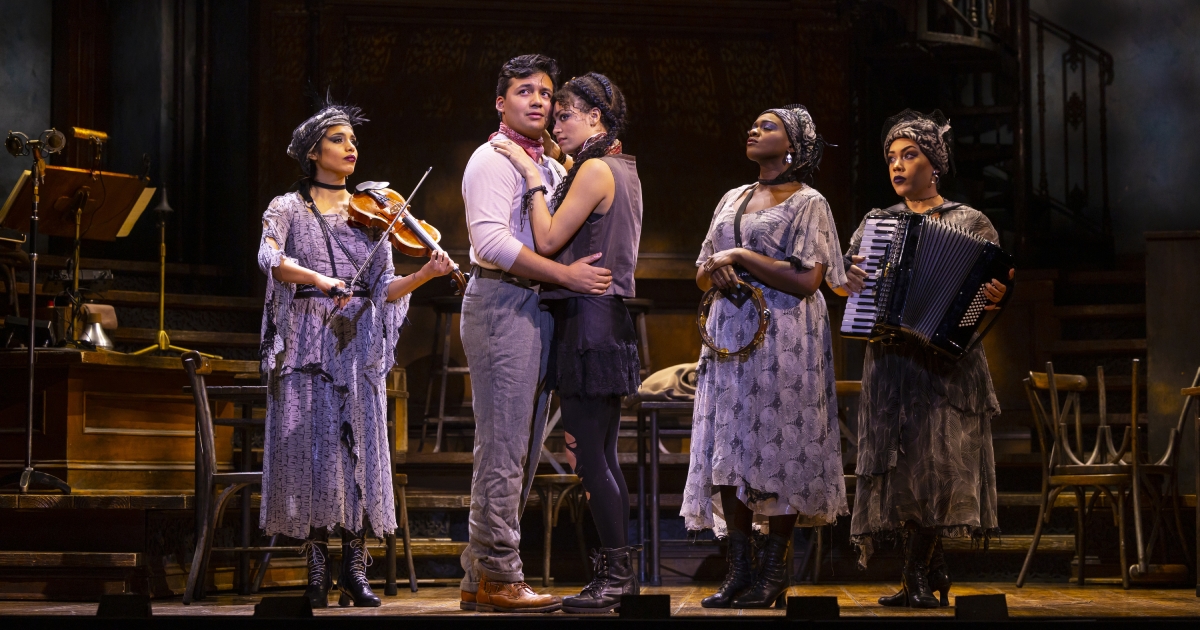As long as humans exist to share stories, we will undoubtedly reimagine and retell those tales that originated as classic mythology. Their central conflicts and resolutions, the core themes and values they reveal about the human experience ring infinitely true, no matter the cultural shifts and turns we create and endure.
This is but part of the reason why “Hadestown", the musical adaptation of the myth of Orpheus and Eurydice, is so powerful and wildly popular. Anaïs Mitchell’s inventive retelling of this deeply romantic as well as political story of how art may be the only thing that saves us also speaks to the contemporary issues that grip and confound us, including climate change and immigration.
Indeed, we’ve created our own hell, and we’re fated to do it again and again is the terrible upshot here, but we’re so captivated by its gorgeous songs and lyrics, the creative sets, lights, and choreography, and the ways these characters reveal themselves and this primeval tale, that at the end of the riveting two-and-a-half hour show, we spring to our feet for standing ovation and stand in long lines to buy T-shirts to commemorate the experience.
This is how impressive the national tour is of this Tony and Grammy Award winning show (developed and directed by Rachel Chavkin) that opened on Broadway in 2019—currently in production at DeVos Hall in Grand Rapids.
The central story we know all too well is this: an aspiring artist boy (Orpheus) falls for starving waif girl (Eurydice), and they’re emboldened by their love. She encourages him to commit to his art, but when he does, he neglects her. The painful reality of poverty leads her to fall prey to the false promise of work and a better life from a sinister power (Hades). She learns quickly that she’s sold her soul to the devil and when the boy discovers she’s gone, he quests to find and rescue her, but to no avail. The choices they’ve both made have sealed their fate, the beautiful life to which they aspire painfully out of reach.
But it’s the telling that’s remarkable. With a dynamic narrator Hermes (Nathan Lee Graham) as the glue between worlds (the two depicted onstage as well as performers and audience) and phenomenal Fates (Dominique Kempf, Belén Moyano, Nyla Watson) as guides for both the characters on stage as well as the audience, the action unfolds beautifully through folksy, bluesy, indie-pop songs shot through with wonderful harmonies, sung exquisitely, and accompanied by talented musicians on stage.
J. Antonio Rodriguez plays Orpheus for innocence and channels Jeff Buckley falsetto in many of his numbers, richly and soulfully sung. He’s a tragic hero, indeed. It’s never entirely clear why he—or Hades—is so drawn to Hannah Whitley as Eurydice, though together they create gorgeous harmonies in “Come Home With Me’ and she effectively expresses the wretchedness of her fate.
Though it’s Matthew Patrick Quinn as Hades who’s the star of this marvelous ensemble. His terrific height coupled with an astoundingly rich bass-baritone voice make him utterly commanding. His “Why We Build a Wall” is the show’s apex and terrifically chilling. The song was written ten years before Trump’s rhetoric about building a wall at the U.S.-Mexico border became fodder for pundits, but perhaps now more than ever it resonates deeply as an ironic chant to freedom that makes enemy of those who simply want to work and toil for a better life.
The relationship between Hades and Persephone, his half-time wife and good-time party girl who moves between worlds, changing with the seasons, is far more complex than that between Orpheus and Eurydice, but Maria-Christina Oliveras, though a wildly performative speakeasy Madame who works really hard to show quivering emotion, doesn’t have the kind of chemistry with Quinn to make the stakes feel real. However, her entr’acte “Our Lady of the Underground” and lively “Livin’ It Up On Top” are wonderfully fun and nearly bring down the house.
The chorus of workers move as one, like the miserable cogs of a wheel, but masterfully and elegantly so, thanks to David Neumann’s inventive choreography that makes use of tables, chairs, and headlamps as well as lanterns and hanging lamps. Together with Rachel Hauck’s tremendous multi-level set that pulls apart and transforms from one world to the next through a garage-door like portal, from a New-Orleans-style jazz club to a factory, Bradley King’s innovative lighting design truly shapes the story and creates a thrilling theatrical experience.
Indeed, “Hadestown" is a thrilling theatrical experience, the classic tale beautifully made anew. A little bit Marxist, a little bit feminist, it captures our modern-day imaginations with the “power of both romance and politics,” which was Mitchell’s intention. Its central tension is between the way things are the way we’d like them to be; and fated though we may be to never fully know the world we dream of, we’ll keep reaching for it. And though it’s a sad tale destined to be told over and over, this particular telling is one we’ll line up to experience again and again.
Hadestown
Broadway Grand Rapids
May 9-14
https://broadwaygrandrapids.com/hadestown





